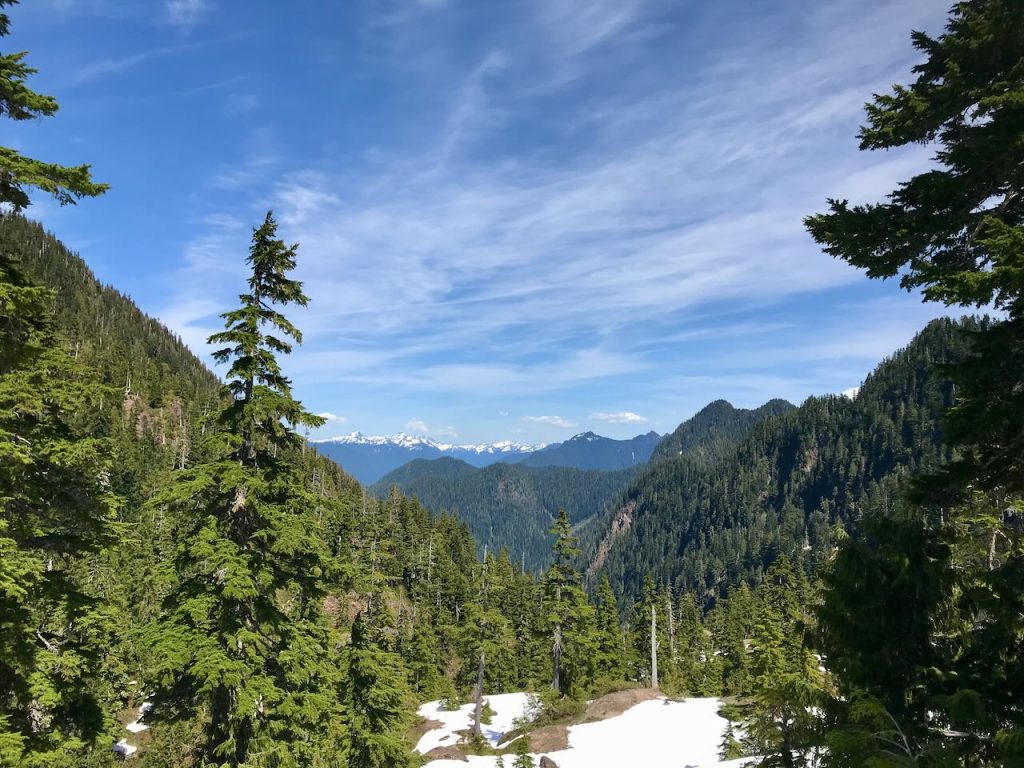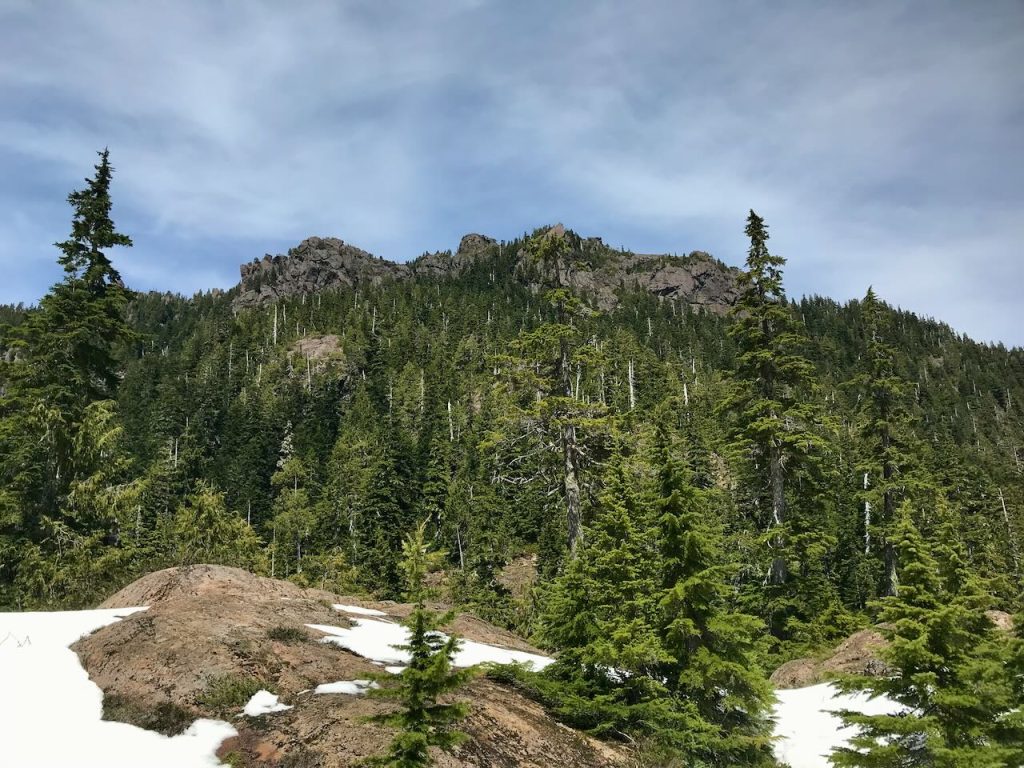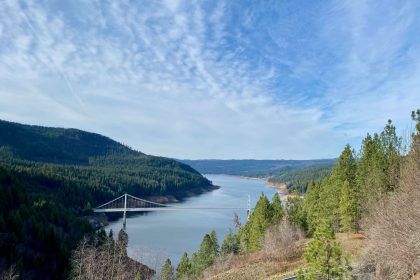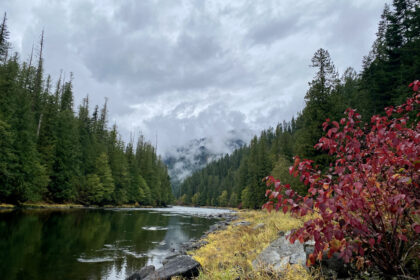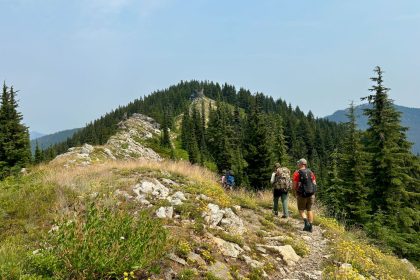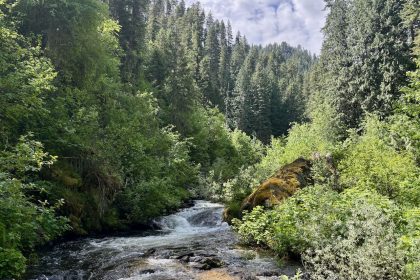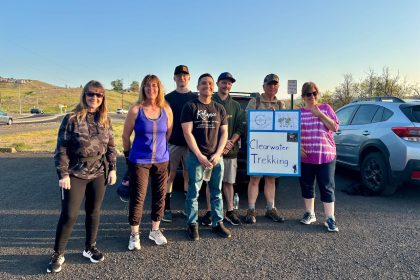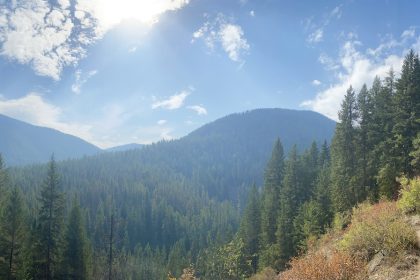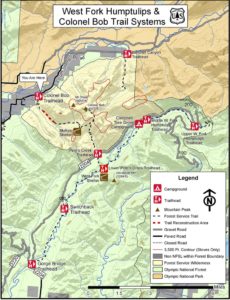 In May, I had the privilege of exploring the West Fork Humptulips Trail #806 with Rites of Passage owner, Emma Welch. Located in the southwest quadrant of the Olympic Peninsula, we were just on the other side of the Quinault Range from the ever-popular Enchanted Valley, one of our favorite trails. We took our group in at the Gorge Bridge Trailhead (see map in the link above) and set off to the North, eager to discover what lay ahead.
In May, I had the privilege of exploring the West Fork Humptulips Trail #806 with Rites of Passage owner, Emma Welch. Located in the southwest quadrant of the Olympic Peninsula, we were just on the other side of the Quinault Range from the ever-popular Enchanted Valley, one of our favorite trails. We took our group in at the Gorge Bridge Trailhead (see map in the link above) and set off to the North, eager to discover what lay ahead.
The trail crisscrosses the West Fork Humptulips River a lot, making it well suited for horseback but a bit tedious for getting in and out of boots and water shoes so often. The trail also changes course to accommodate the river flow, so the current path is marked with orange ribbons and diamond plaques. The whole thing made for a fun adventure of hunt and seek along the river and through the trees. Fortunately, we were there during a warm week in May, so we enjoyed cooling off in the river and making camp at the best swim holes we could find. Emma’s a sucker for the water, no matter how cold it is.
At the about the half-way point, the West Fork Humptulips Trail intersects with Pete’s Creek Trail #858 which climbs up to the peak of Colonel Bob mountain. Every time we drove to Enchanted Valley, we’d pass the Colonel Bob Trail on the Quinault side of the range and swear that one day we’d get up there. Well, here was our chance. We decided we would camp near the West Fork Shelter for two nights and day hike to the top of the 4,500 foot tall Colonel Bob.
Pete’s Crete Trail took us up out of the lush river bed and into the old-growth forest climbing the mountainside. There weren’t many views for the first few miles, just the pleasant coolness of the woods and the rigors of the ascent. But that all changed when we intersected with the Colonel Bob Trail #851 at about 3,000 feet. The trail begins to switchback steeply through wildflowers and past an old rock slide.
We hit snow at 3,500 feet and followed old footprints and orange markers to helps us stay on trail. We made it all the way to an area known as Moonshine Flats, less than a mile from the summit, then we lost the trail. The footprints had faded, the orange markers seemed to point back on themselves, and the snow obscured any other signs of the trail. But that wasn’t our main problem.
We had been doing our best to interpret the map according to the terrain around us, but it’s hard to judge the scale of a mountain peak when you’re standing right below it, and we were surrounded by several. What we thought was Colonel Bob wasn’t, and that steered us in the wrong direction. We went left when we needed to go right.
We pushed up into the snow as far as we could go, trying to reconnect with the trail that wasn’t there. But we knew where we were and how to get back, so we made the most of it, hiking around in the snow, sliding back down on our butts, taking stunning photos, and marveling at where we were. Eventually, we settled into a beautiful spot on the slope, did lunch and some journaling, then wrapped things up with a Council Circle.
On our way out, we ran into another hiker who was heading back down the Colonel Bob Trail. He pointed out the correct trail to us and explained that his wife had tried to make the summit only to be turned away by too much snow. So we wouldn’t have made it anyway, but that didn’t keep me from bad about leading our group off-trail.
I didn’t feel bad about making a mistake, I felt bad about making a mistake that could have put my company in danger. I want to be more reliable than that. As I played the scenario back in my mind over and over again, I realized that my main problem was not in how I followed the trail through the snow or read the signs available, it was the fact that I was aiming for the wrong peak. I interpreted the signs and made decisions based on a faulty premise. The truth is, I was making good decisions towards the wrong goal.
Many of our clients find themselves in a similar position in life. As do we all, I suppose. We dream of a successful, happy life but get off trail thinking that some particular thing, person, or experience is the summit we are after. We’re not always trying to take a short cut, sometimes we’re just reading the map wrong, but either way, we end up knee-deep in the snow on some mountainside with no idea how to get where we’re trying to go. Maybe that looks like substance abuse or an unhealthy relationship, or maybe that looks like seeking the next adventure or achievement. Whatever it looks like in our lives, it can be frustrating and scary, even dangerous. And just like our group did, we need each other to get back on track, and we need the help of one who has gone before to show us the true way.
Not every off-trail adventure ends in disaster, some even lead to the best experiences of our lives, but there’s always something to be learned if we’re willing to listen. And this is why I do it, to see the world from a new perspective. It’s why I travel, explore, and seek out the unknown both within me and without.
Thanks for the lessons, Colonel Bob.


